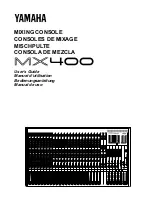
6
MP-Series Heavy Duty Electric Cylinders
Rockwell Automation Publication MPAI-IN001E-EN-P - March 2012
Before You Begin
Remove all packing materials from within and around the item. After unpacking, verify the
nameplate catalog number against the purchase order.
1.
Remove the polyethylene foam cushioning.
2.
Remove the electric cylinder carefully from its shipping container.
Consider the weight of the electric cylinder. Depending on the design, the electric
cylinder can weigh up to 49 kg (108 lb).
Do not rotate the thrust rod. Rotating the thrust rod will cause the home position to be
lost.
3.
Visually inspect the electric cylinder for damage.
Closely examine the mounting surface, frame, and thrust rod for defects.
4.
Notify the carrier of shipping damage immediately.
Planning Your Installation
Refer to the Kinetix® Motion Control Selection Guide, publication
, for the
specifications and additional products referenced in this section:
•
This product can be operated in compliance with the relevant safety regulations, only if
the maximum loading limits are observed.
ATTENTION:
Electric cylinders that exceed 23 kg (51 lb) require a two man lift. Do not lift
the electric cylinder by the thrust rod.
ATTENTION:
Do not rotate the thrust rod. Rotating the thrust rod will cause the factory
set home position to be lost and require the electric cylinder be homed before its initial
use.
ATTENTION:
Do not attempt to open and modify the electric cylinder beyond changing
motor connector orientation as described on page
, or installing a rear clevis mount as
. Only a qualified Allen-Bradley employee can service the internal
working of the electric cylinder.
Failure to observe these safety precautions could result in personal injury or damage to
equipment.
ATTENTION:
The electric cylinder is not intended to be used in applications where
side-loading occurs. Loads must be guided and supported. Aligned load with the
line-of-motion of the thrust rod.
Side loading will reduce the lifetime of the electric cylinder.







































